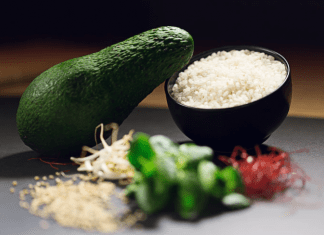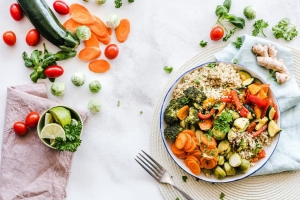Among the excellent novelties that may be mentioned, the cooking slab of the Himalayan salt has found its place in the transforming landscape of the cooking appliances and natural cookery, and as a long-term product of science, art, and healing. All these slabs are evil like salt beds in the Himalayas, and in them, there is much more than kitchen salt. They become the carriers of centuries of natural shaping, richness in minerals, and incomparable multifacetedness, and they are what makes cooking memorable.
An ordinary food that becomes a lovely and mouth watering dish is on a Himalayan salt cooking slab, grilled on stovetops, or heated in an oven on top of a thin-cut food. Other than the result, the process, the presentation, and the story in each slab are excellent.
And there was no time like the present to talk about what it is that led this seemingly unexceptional pink block to be a revolutionary Kitchen tool, not to mention how it assists professional cooks and home cooks.
The Origin of Himalayan Salt Cooking Slab:
Himalayan salt cooking slab mined in the ancient Salt Range mines of Pakistan, where natural crystallization that has occurred continuously over more than 250 million years produced a dense, mineral-rich mass of salt. As opposed to fine table salt, this pink salt is unsalted and contains more than 80 trace minerals. These minerals do not just make this salt a different color, but also, they make it have a distinct flavor when used in cooking.
The separate slices are the slices of geologic time, so it is not merely a cooking surface, but a physical freeze-frame of the history of the planet. With this, there is authenticity, heritage, and a flavor of some form of home cooking in respect to your kitchen.
Science of Himalayan salt cooking slab
Salt is not something people typically associate with a cooking surface; however, the crystalline structure of Himalayan salt lends it some special thermal and seasoning properties.
Retention and thermal conductivity
The Himalayan salt slabs can be heated to a very high temperature and remain hot for a very long time. This allows high-heat cooking (e.g., searing, grilling, and roasting) as well as even heating over the surface.
The Himalayan salt cooking slabs will never cool quickly and will retain their warmth, unlike a metal pan, which will gain and lose its warmth very fast, and in the process contribute to cooking the food more evenly and not overcooking or getting dehydrated.
Certain, Fine Seasoning
Cooking with a salt slab does not imply that everything will be sodium-filled. The slab conveys a soft, delicate mineral taste. The salt reacts with surface moisture within food, hence producing a delicate flavor of seasoning instead of overwhelming the palate.
The Artistic Worth of a Culinary Tool
Cooking on a Himalayan salt cooking slab is part science and part performance. The steel sharp edge of a new cut of meat hitting the hot surface, the subtle amount of natural salt released into the food, and the visually striking contrast between fresh ingredients and a blazing pink stone - all these processes upscale the culinary experience.
However, the slab is also a presentation platform besides cooking. Chilled salt plates are often employed to serve such foods as sushi, cheeses, charcuterie, fruits, and desserts. The slab provides an earthy and sophisticated impression to the table and helps in keeping things cool, as well as bringing hints of flavors to them.
Applications of a Himalayan Salt Cooking Slab
Cooking Hot
Grilling meat such as steaks, lamb chops, scallops, or shrimp.
Grilled mushroom, zucchini, and asparagus.
Egg frying or thin crepe frying on the slab in front of the stove or grill.
Serving Cold
Freezing and serving sushi, sashimi, or smoked salmon.
The serving of fresh fruit, cheeses, or desserts.
Serving canapés or hors d'oeuvres at prestigious functions.
Health Benefits and Sustainability Benefits
In addition to being appetizing and pretty, Himalayan salt cooking slabs come with health benefits and eco-friendliness.
There are no coatings, etc. on them - Unlike non-stick pans, these slabs are chemical-free as well as antimicrobial by nature.
No oil and Butter:
You will be able to cook without oil and butter in the preparation of any meat and vegetables to make your meals healthier.
Trace minerals:
In trace amounts, natural minerals can be absorbed during the cooking process and contribute to the dietary intake of essential minerals.
One slab can be reused many times with care, and thanks to that, it saves waste and does not contribute to the use of disposable cookware.
Care and Maintenance:
Himalayan salt cooking slabs should be treated with care to ensure they last a long time.
Slow heating:
It is a must to avoid cracking. It is never advisable to place a cold slab on high heat. There should be a gradual warming up of the temperature.
A wet towel or soft brush must be used in cleaning. Do not use soap at all; it may soak into the slab and spoil it. Air dry and wipe.
Keep it Dry:
The Himalayan salt cooking slab should be kept in a dry place, either wrapped with cloth or in a wooden box, to prevent it from being damaged due to moisture.
An Instrument of Chefs, Hosts, and Home Cookers as well
The universal nature of the salt slabs of the Himalayan salt is what makes them unique. This is not just tableware for gourmet cooks or food stylists, but can also be enjoyed by any person who loves good food and natural materials.
Kitchen professionals employ them in gaining control over flavors, creating dramatic presentations, and steaming under high heat.
At dinner parties, they are the best dishes to serve, and they introduce the conversation.
There is a healthy, natural, and spectacular manner of cooking meals that is used by home cooks.
These are not cookware; these are functional decor—an experience of the senses.
Final Thoughts:
Himalayan salt cooking slab is not a mere technique, but rather a kind of bond with the earth, with tradition, and with the art of food. It motivates us to savor our time and taste the senses, recognizing that it is a pleasure both in the way and as a result.
It does not matter if you are grilling fresh seafood, presenting a fine boutique of cheese, or trying out a new technique for using food; this is what you should know: that food is not the only thing you will be cooking.






